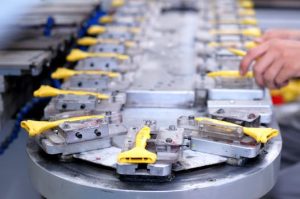The Changing Customer Journey: Buying Cars in the Digital Age
The traditional way of buying cars involved visiting several dealerships, test driving multiple models, and haggling over prices. However, with the advancements in technology, the customer journey of buying cars has drastically changed. The digital age has brought convenience, transparency, and a plethora of options for customers looking to purchase a vehicle. In this article, we will explore the various ways in which technology has transformed the customer journey of buying cars and the impact it has on the automotive industry.
The Rise of Online Research
Gone are the days when customers had to rely solely on information provided by car dealers. Thanks to the internet, customers can now research brand, model, prices, and features of cars from the comfort of their homes. Whether it’s reading reviews, comparing prices, or exploring different models, customers can easily find all the information they need with just a few clicks. This has not only made the process more convenient but has also empowered customers with knowledge, allowing them to make informed decisions.
The Virtual Showroom Experience
The emergence of virtual reality technology has revolutionized the car buying experience. Customers can now take a virtual tour of a car’s interior and explore different features without leaving their homes. This technology has not only enhanced the customer’s understanding of the car but has also saved them time and effort. In addition, some car manufacturers have also introduced augmented reality apps, allowing customers to see how a particular car model would look in their driveway.
Digitization of Transactions
The days of spending hours at a dealership negotiating prices and filling out paperwork are long gone. With the rise of digital transactions, customers can now complete the entire car buying process online. From browsing and selecting a car to negotiating prices and signing the paperwork, customers can do it all from their smartphones or laptops. This has not only made the process more convenient but has also eliminated the need for face-to-face interactions, which is especially beneficial during the ongoing pandemic.
Personalization and Customization
Technology has not only made the process of buying cars easier but has also increased personalization and customization options for customers. With the help of online configurators, customers can now choose features, colors, and add-ons to make their car unique. In addition, some dealerships also offer personalized financing and insurance options tailored to the customer’s needs and budget, giving them a more personalized buying experience.
The Influence of Social Media
Social media platforms have become an important aspect of the customer journey when buying cars. With the rise of influencer marketing, customers can now get a closer look at a specific car and its features through social media content. Social media also allows customers to engage with brands and dealerships, ask questions, and get quick responses. Moreover, social media platforms also play a significant role in word-of-mouth marketing, with customers sharing their positive or negative experiences with others, influencing their purchasing decisions.
The Role of Artificial Intelligence
Artificial Intelligence (AI) is changing the game for car dealerships. With the use of chatbots, customers can now get instant responses to their queries and book test drives without the need for human assistance. AI-powered tools also assist dealerships in analyzing customer data, predicting customer behavior, and offering personalized recommendations. This helps dealerships understand their customers better and cater to their needs, leading to increased customer satisfaction.
In Conclusion
The digital age has completely transformed the customer journey of buying cars. With the convenience, transparency, and personalization options brought by technology, the car buying process has become smoother and more efficient. However, this also means that dealerships and car manufacturers must keep up with the ever-changing digital landscape to stay competitive. As technology continues to evolve, we can expect to see even more innovative solutions to enhance the customer experience in the auto industry.





